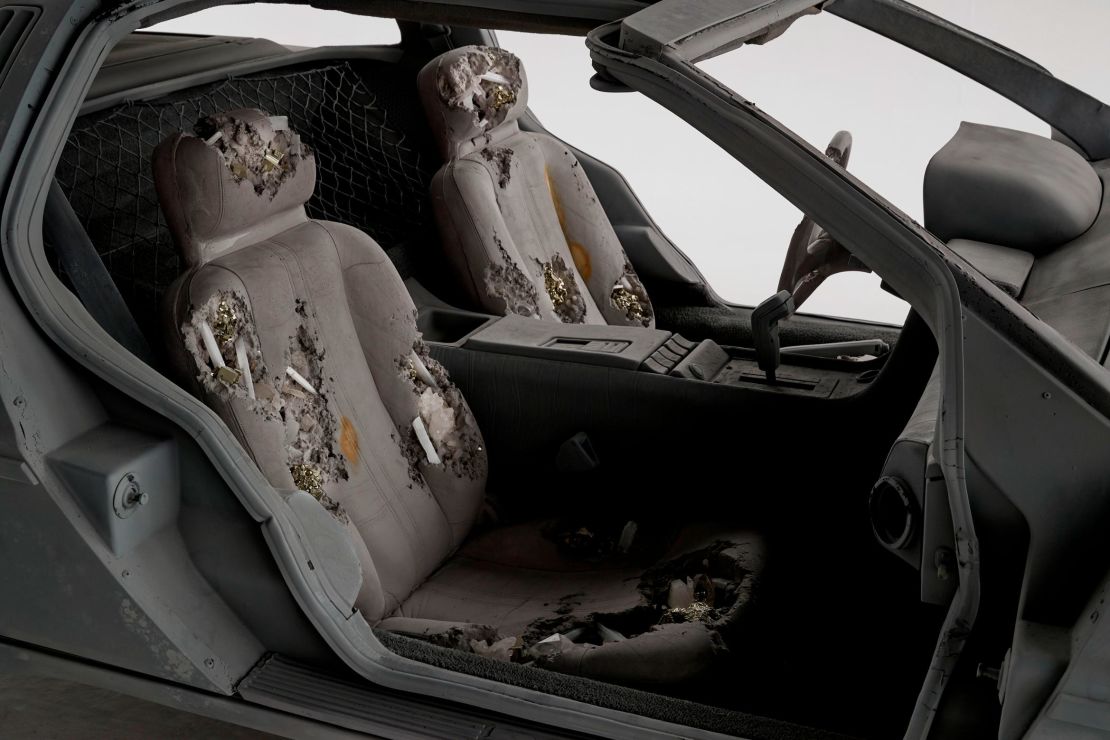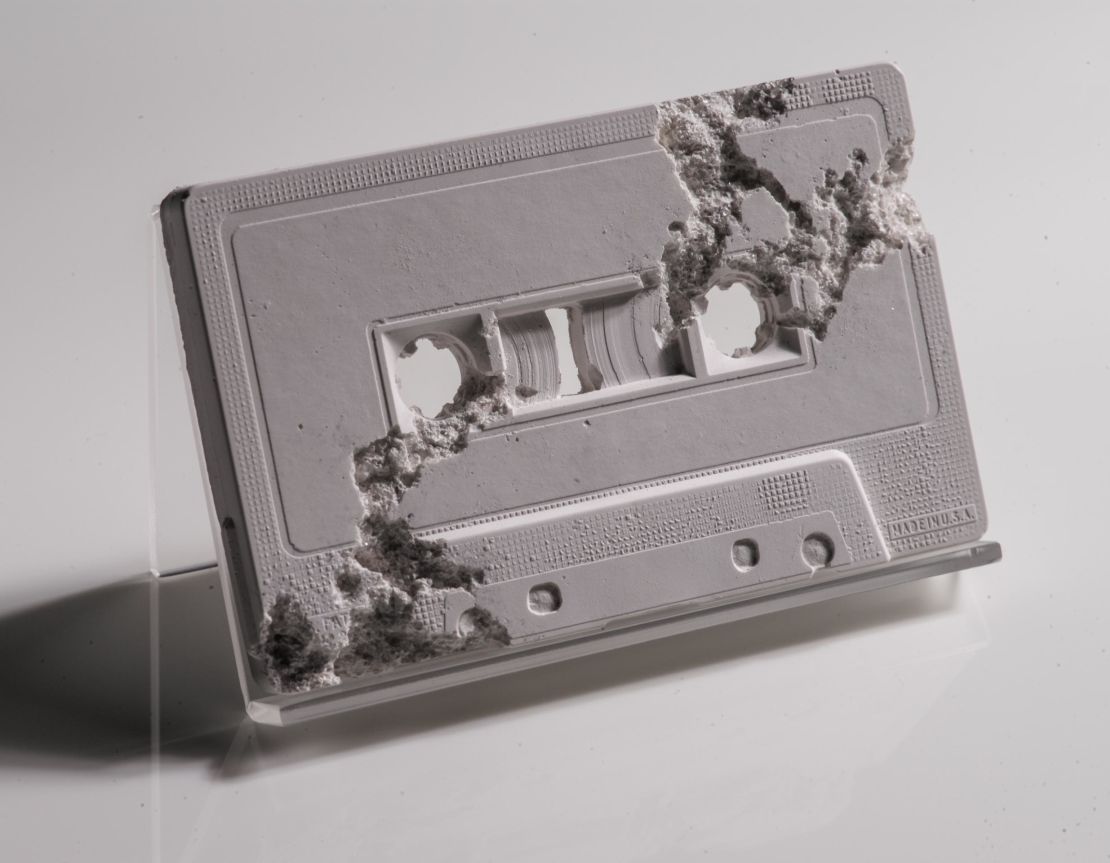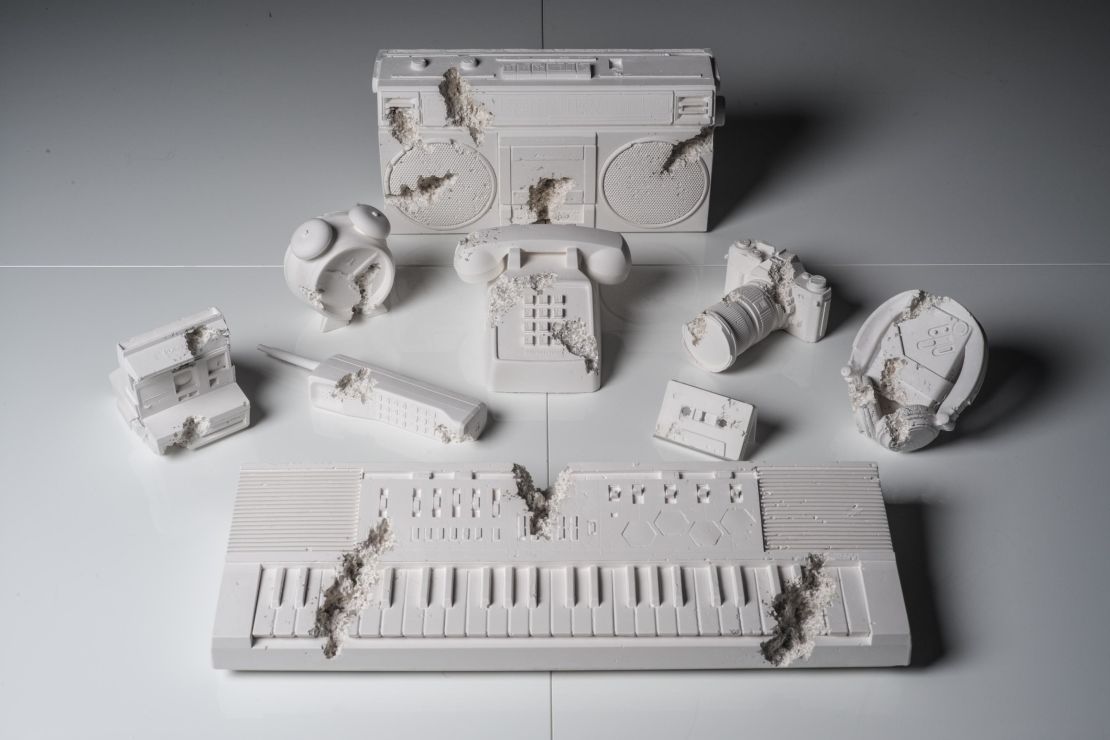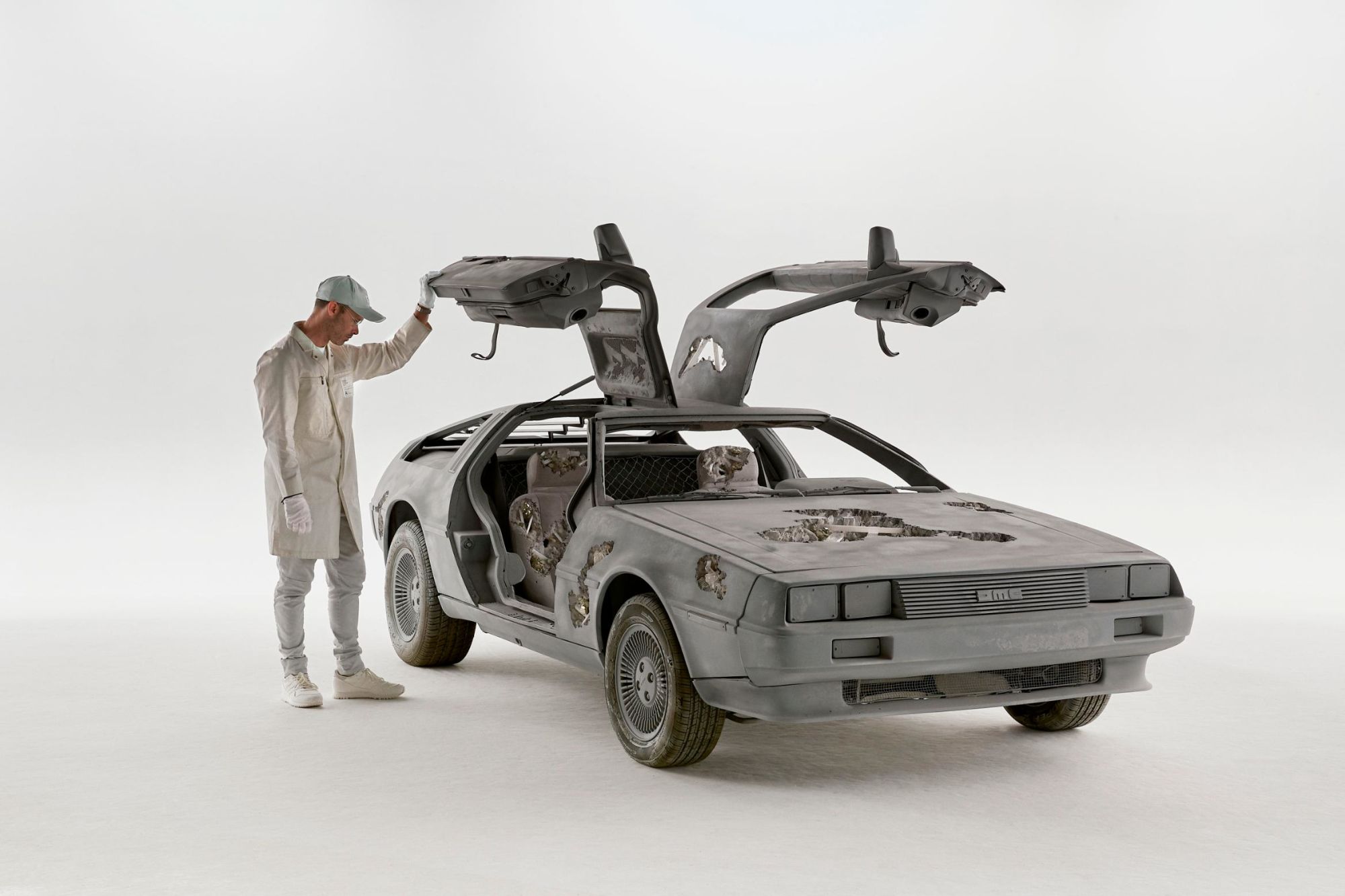Few slices of pop culture history are as closely associated with time travel as the DeLorean, a car immortalized in the “Back to the Future” franchise. But what if one was left to decay for centuries – even millennia – after Marty McFly last took the wheel?
This is a question posed by artist Daniel Arsham, who has spent nearly two years reimagining the classic ’80s vehicle as a piece of “fictional archeology.”
Daniel arsham future cars
Built around an original DeLorean DMC-12 – one of fewer than 10,000 ever produced – the sculpture has been made using volcanic ash, selenite and quartz (materials that we “associate with geological time,” Arsham said in a phone interview). The car’s chassis has been ruptured with deep cavities, revealing clusters of pyrite crystals, while seats and interiors have been painstaking eroded in the artist’s New York studio.
“Taking the whole thing apart was a bit of a childhood dream,” Arsham said in a phone interview. “It’s just a beautiful and immediately recognizable object.
“Part of the challenge was coaxing the materials to do what I wanted them to, so that it looks like it’s falling apart without it actually doing so.”

Relics of the far future
The uncanny sculpture is the latest – and largest – work created by Arsham in a style he calls “Future Relic.” Similar techniques have been used to erode a replica Ferrari 250GT, star of the 1986 comedy “Ferris Bueller’s Day Off.”
Both vehicles will debut at Perrotin’s New York gallery next month, forming the centerpiece of Arsham’s new exhibition “3018.” As with his previous shows, like “Circa 2345” and “Welcome to the Future,” Arsham will present objects rendered obsolete by his “Future Relic” treatment.

Whether Casio keyboards, Sony cassette players or Polaroid cameras, which he recreates in plaster using molds, the iconic items have been intentionally selected to resonate with as many present-day viewers as possible.
“If I’m trying to convey something about a particular moment in time, it’s much more useful if a wide selection of people have the same references,” Arsham said. “I pick objects that are recognizable in Japan or New York or South America – things that have similar reference points.”
Begun in 2013, Arsham’s original “Future Relic” project spawned a series of nine objects and four videos (featuring the likes of like James Franco and Juliette Lewis) set in a future world ravaged by climate change. Yet, the works are not designed to polemicize. They are, Arsham said, more an opportunity to reflect than a call to arms.

“I often talk about the inevitability of all this,” he said, referring to climate change. “I’m not making a particular judgment about ecology or the state of things. It’s more just a meditation on the passing of time. It’s not a critique.
“These are invitations to think about fluidity in time,” he added.
Decay and growth
Arsham, who reportedly counts celebrities like Jay-Z and Pharrell Williams as friends, is also a co-founder of the design collective Snarkitecture. His firm’s large-scale art installations have included a giant “pillow fort” in California and an artificial beach inside a Washington D.C museum, made from approximately 1 million recyclable plastic balls.
The architectural instinct to create may seem anathema to Arsham’s apparent fixation with decay, but he considers the two facets of his career to be complementary.
“These ‘archeological’ objects are made of crystal, which is a material we often associate with growth,” he said. “You could say that they’re falling apart, but you might also say they’re growing.
“That ‘in between’ is something that I trace back to the very beginning of my work, almost 20 years ago. With drawings of construction sites – or demolition sites – there’s an ambiguity as to which direction things are going.”
“3018” is showing at Perrotin New York from Sept. 8 to Oct. 21
















